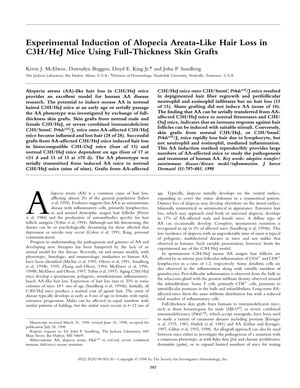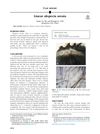Experimental Induction of Alopecia Areata-Like Hair Loss in C3H/HeJ Mice Using Full-Thickness Skin Grafts
November 1998
in “
The journal of investigative dermatology/Journal of investigative dermatology
”

TLDR Skin grafts on mice can cause an immune response leading to hair loss, useful for studying human hair loss conditions.
In a study from 1998, researchers explored the induction of Alopecia Areata (AA)-like hair loss in C3H/HeJ mice using full-thickness skin grafts as a model for human AA. They found that skin grafts from normal C3H/HeJ mice and immunodeficient C3H/SmnC Prkdc(scid)/J mice onto AA-affected C3H/HeJ mice resulted in inflammation and hair loss in all 28 cases. When grafts from AA-affected mice were transferred to histocompatible C3H/OuJ mice and normal C3H/HeJ mice, hair loss was induced in 4 out of 13 and 19 out of 32 cases, respectively, with the success rate being age-dependent. The AA phenotype could be serially transmitted to normal C3H/HeJ mice in all nine cases. However, grafts onto C3H/SmnC Prkd(scid)/J mice led to depigmented hair regrowth and immune cell infiltration but no hair loss in all 15 cases. Sham grafting did not induce AA in any of the 10 cases. This study concluded that an immune response against hair follicles can be induced in mice, providing a reproducible model to study the pathogenesis and treatment of human AA.

